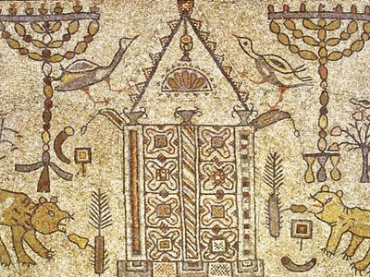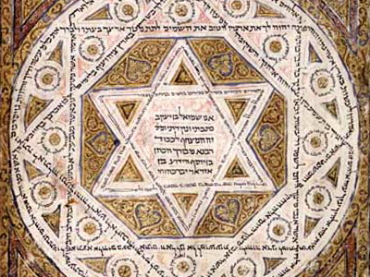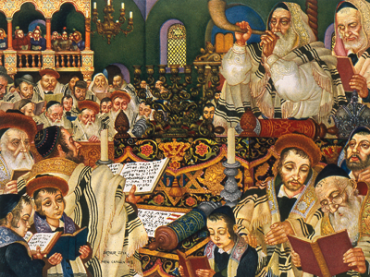Jewish Studies
Jewish Studies is an interdisciplinary field studying Jews and Judaism in all of their geographical, cultural, social, economic, historical, political, religious, and linguistic contexts, from Late Antiquity through the modern period. The Judaism in Context series features monographs and edited collections that traverse the wide landscape of Jewish Studies.
Normative Judaism? Jews, Judaism and Jewish Identity
Melilah Supplement 1: The Proceedings of the British Association for J.S. 2008
Edited by Daniel R. Langton & Philip S. Alexander
ISBN: 978-1-60724-161-4
This collection of short case studies considers the issue of normatively in Judaism and Jewish identity. The questions of how and why certain aspects of Jewish life and thought come to be regarded as authoritative or normative, rather than inauthentic or marginal, have been and continue to be contentious ones. Topics include the philosopher Moses Maimonides, the composer Felix Mendelssohn, the self-perception of communal leadership in Manchester during the nineteenth- and twentieth-centuries, sermons of Jewish Reform rabbis during the Second World War, Orthodox rabbinic debate about war in general, representations of Jews in photographic exhibitions, the idea of Jewish music, and the academic study of Judaism itself.
$56.00
Antitheodicy, Atheodicy and Jewish Mysticism in Holocaust Theology
Atheodic Theologies After Auschwitz
Series: Gorgias Studies in Judaism 57
ISBN: 978-1-4632-0176-0
The Holocaust has provoked many different Jewish theological responses, yet upon closer inspection interesting commonalities can be observed between even seemingly antithetical thinkers. One of these common trends within Holocaust theology has been the rejection and replacement of traditional theodicies which explain and justify suffering, with responses centred on ideas of recovery, consolation and divine mystery. Another widespread, though largely unrecognized trend is use of Jewish mystical themes by Holocaust theologians. This study shows how the presence of Jewish mysticism can be explained, at least in part, by this post-Holocaust collapse of theodicy.
$181.00
Seeing the God
Ways of Envisioning the Divine in Ancient Mediterranean Religion
Edited by Jeffrey B. Pettis
ISBN: 978-1-61143-251-0
"When people prayed, they expected their gods to come," wrote Robin Lane Fox, providing the impetus for this volume of collected essays exploring the concept of how the ancients “envisioned” the deities within various ancient religious traditions. The perspectives of Judaism, Gnosticism, Syriac Christianity, Byzantium, and Classical Greco-Roman religion and philosophy are considered. Specific emphasis is given to phenomena such as dreams, visions, and initiatory rites mediating the divine encounter.
$143.00
Perspectives on Hebrew Scriptures VII
Comprising the Contents of Journal of Hebrew Scriptures, Vol. 10
Edited by Ehud Ben Zvi
ISBN: 978-1-4632-0165-4
This volume incorporates all the articles and reviews published in Volume 10 (2010) of the Journal of Hebrew Scriptures.
$298.00
The Tell en-Nasbeh Excavations after 85 Years
Edited by Jeffrey R. Zorn & Aaron J. Brody
Series: Gorgias Studies in the Ancient Near East 9
ISBN: 978-1-4632-0416-7
Collected essays on aspects of daily life at the Israelite site of Tell en-Nasbeh (biblical Mizpah of Benjamin). These include: trade and economy, death and burial, metals, cooking, water management, curation of the site’s materials, and a site bibliography.
$164.00
Narratology and the Pentateuch Targums
A Methodological Experiment
By Simon Lasair
Series: Biblical Intersections 9
ISBN: 978-1-61143-489-7
In this innovative book Simon Lasair explores some of the potentials of applying narratology to the Pentateuch Targums. Lasair argues that when the targums present coherent narratives, they largely carry the major structures of the Pentateuch over into an Aramaic context. This book calls for a wide ranging rethink of the methodologies used to study targumic literature, as well as how to place the targums within their original historical contexts.
$138.00
Portraits of a King Favored by God
David the King: God's Poet, Warrior, and Statesman
Edited by Mishael M. Caspi & John T. Greene
Series: Biblical Intersections 8
ISBN: 978-1-61143-405-7
David the king, when studied against the backdrop of existing material cultural remains from the ancient Middle East, scarcely seems to have been there. Excavations in Jerusalem have turned up nothing concrete about his existence. The literature concerning him is fraught with problems and generally takes on a legendary-mythological character. Even the meaning of his name is unclear. If he is mentioned at all by his contemporary monarchs against whom he would have fought it is only obliquely or only intimated by omissions or partial spellings in context. This volume attempts to advance scholarship addressing these concerns.
$150.00
Job of Uz
Suffering of the Righteous and the Justice of God
Edited by Mishael M. Caspi & John T. Greene
Series: Biblical Intersections 7
ISBN: 978-1-61143-420-0
Job finds himself in a situation similar to one experienced by everyone at some point in his or her life. He wants answers to questions concerning what has happened to him, since he lived his life according to the traditional wisdom and rules of conduct, asking what has gone wrong and why. The Book of Job raises fundamental questions of both the actions and expectations of humans and deities, and asks whether a clear understanding can be reached between them. The contributing essays to this anthology help advance and sharpen both the questions and the responses to that question.
$140.00
Manchester Journal of Jewish Studies (2008)
ISBN: 978-1-4632-0184-5
Melilah is an interdisciplinary peer-reviewed journal concerned with Jewish law, history, literature, religion, culture and thought in the ancient, medieval and modern eras. Contributors (2008) include Tobias Green, David Lincicum, Daniel R. Langton, Dan Garner, and Giula F. Miller.
$51.00
Scribal Wit
Aramaic Mnemonics in the Leningrad Codex
By David Marcus
Series: Texts and Studies (Third Series) 10
ISBN: 978-1-61143-904-5
This book presents a detailed analysis of the Aramaic mnemonics, those short witty sentences written in Aramaic as memory aids in the margins of one of the oldest extant biblical Hebrew manuscripts, the Leningrad Codex (1008 CE). The material is presented in clear, user-friendly charts. Each mnemonic is set alongside the Hebrew verses it represents. This book demonstrates the ingenuity of the Masoretes in their grand endeavor to preserve the text of the Hebrew Bible precisely in the form that it had reached them.
$132.00
Perspectives on Hebrew Scriptures VIII
Comprising the Contents of Journal of Hebrew Scriptures, Vol. 11
Edited by Ehud Ben Zvi
ISBN: 978-1-4632-0220-0
This volume incorporates all the articles and reviews published in Volume 11 (2011) of the Journal of Hebrew Scriptures.
$278.00
Re-Presenting Texts
Jewish and Black Biblical Interpretation
Edited by W. David Nelson & Rivka Ulmer
Series: Judaism in Context 16
ISBN: 978-1-61143-924-3
This is the fifth issue of Proceedings of the Midrash Section at the Annual Meeting of the Society of Biblical Literature published in this series, and contains six papers on Jewish and Black biblical hermeneutics with regard to Rabbinic Midrash.
$159.00
Manchester Journal of Jewish Studies (2011)
Editors Daniel R. Langton & Renate Smithuis
ISBN: 978-1-4632-0221-7
Melilah is an interdisciplinary electronic journal concerned with Jewish law, history, literature, religion, culture and thought in the ancient, medieval and modern eras.
$58.00
Pragmatic Studies in Judaism
Edited by Andrew Schumann
Series: Judaism in Context 14
ISBN: 978-1-4632-0222-4
This book is the first attempt to apply formal pragmatics to Judaic studies as a discipline under the auspices of cultural studies, reconstructing the pragmatic approach in Judaism and defining some of the pragmatic limits assumed in the Torah. It is a continuation of previous work considering Judaic reasoning from the standpoint of analytic philosophy and logic. The present volume aims to explicate the Judaic pragmatic point of view with an emphasis on logic, political studies, ethics, and speech act theory.
$186.00
In the Arms of Biblical Women
Edited by John T. Greene & Mishael M. Caspi
Series: Biblical Intersections 13
ISBN: 978-1-4632-0231-6
The less-discussed character in the Bible is the woman: two talking animals therein have sometimes received more page space. This volume shines the light of close scrutiny in the less-trodden direction and focuses on biblical and allied women, or on the feminine side of Creation. Biblical women are compared to mythical characters from the wider Middle East or from contemporary literature, and feminist/womanist perspectives are discussed alongside traditional and theological perspectives.
$168.00
Perspectives on Hebrew Scriptures IX
Comprising the Contents of Journal of Hebrew Scriptures, vol. 12
Edited by Ehud Ben Zvi & Christophe Nihan
ISBN: 978-1-4632-0420-4
This volume incorporates all the articles and reviews published in volume 12 (2012) of the Journal of Hebrew Scriptures.
$287.00
Conversos in the Responsa of Sephardic Halakhic Authorities in the 15th Century
By Dora Zsom
Series: Perspectives on Society and Culture 1
ISBN: 978-1-4632-0239-2
This volume presents a systematic and detailed elaboration of the halakhic (legal) decisions written by five of the most important authors who wrote responsa concerning conversos between the years 1391 and 1492. The expulsion was an event that radically changed the perspectives of the Iberian conversos. The halakhic authorities were confronted with an absolutely new situation, in which they had to reformulate their position towards the conversos. This volume presents all the responsa written in connection with conversos by Isaac b. Sheshet Perfet, Simeon b. Ṣemaḥ Duran and his descendants: Solomon b. Simeon Duran, Ṣemaḥ b. Solomon Duran and Simeon b. Solomon Duran.
$148.00
Manchester Journal of Jewish Studies (2012)
Editors Daniel R. Langton & Renate Smithuis
ISBN: 978-1-4632-0240-8
Melilah is an interdisciplinary electronic journal concerned with Jewish law, history, literature, religion, culture and thought in the ancient, medieval and modern eras.
$59.00
A Short Introduction to the Tiberian Masoretic Bible and its Reading Tradition
Series: Gorgias Handbooks 28
ISBN: 978-1-4632-0246-0
This book is intended to provide a quick introductory overview of the Tiberian Masoretic tradition of the Hebrew Bible and its background. It was this tradition that produced the great Masoretic codices of the Middle Ages, which form the basis of modern printed editions of the Hebrew Bible. Particular prominence is given to the multi-layered nature of the Masoretic tradition. The volume contains a section describing the Tiberian reading tradition, which is essential for a correct understanding of the vocalization system.
$47.00
The Sub-Loco Notes in the Former Prophets of Biblia Hebraica Stuttgartensia
Series: Texts and Studies (Third Series) 12
ISBN: 978-1-4632-0531-7
In BHS’s Masoretic apparatus, certain Masorah parva notes are marked “sub loco” in order to refer the reader to the corresponding commentary that was to be found in the third volume of Massorah Gedolah. Due to Weil’s passing, however, this commentary was never realized. This volume builds on Mynatt’s 1994 analysis and classification of the Pentateuch’s 297 sub loco notes by incorporating the Aleppo and Cairo Codices. Dost evaluates all 451 sub loco notes in the corpus of the Former Prophets, and evaluates Weil’s contribution by comparing Weil's revision of the Leningrad Codex’s Masorah against the Masorah of the Aleppo Codex.
$195.00
New Studies in the Book of Isaiah
Essays in Honor of Hallvard Hagelia
Edited by Markus Zehnder
ISBN: 978-1-4632-0356-6
This volume contains twelve articles that shed new light on the Book of Isaiah, covering a wide array of historical, linguistic and theological topics. The various aspects of God’s intervention at different points of human history is a main focus of the studies. The collection is marked by a broad diversity in approaches and theological background, and is a useful tool especially for scholars, students and pastors.
$157.00
Righteous Giving to the Poor
Tzedakah ("Charity") in Classical Rabbinic Judaism, Including a Brief Introduction to Rabbinic Literature
By Rivka Ulmer & Moshe Ulmer
Series: Gorgias Handbooks 29
ISBN: 978-1-4632-0261-3
Moral insights and comments about Tzedakah ("Charity") are found throughout the vast body of rabbinic literature. This book attempts to present a survey of the rabbinic sources concerning Tzedakah and to provide the reader with an analysis of the system of Tzedakah as created and understood by the Rabbis.
$55.00
Manchester Journal of Jewish Studies (2013)
Editors Daniel R. Langton & Renate Smithuis
ISBN: 978-1-4632-0282-8
Melilah is an interdisciplinary electronic journal concerned with Jewish law, history, literature, religion, culture and thought in the ancient, medieval and modern eras.
$52.00
Central Sanctuary and Centralization of Worship in Ancient Israel
From the Settlement to the Building of Solomon's Temple
Series: Gorgias Near Eastern Studies 6
ISBN: 978-1-4632-0368-9
This book provides the first major reinvestigation and reinterpretation of the history of centralization of worship in ancient Israel since de Wette and Wellhausen in the nineteenth century. Old Testament scholarship has thus far relied on the consensus that the book of Deuteronomy is the product of late monarchic Judah (7th century BC). Pitkänen places the biblical material in its archaeological and ancient Near Eastern context and pays special attention to rhetorical analysis. The author suggests that the book of Joshua, as well as its sources (such as Deuteronomy) may have originated as early as before the disaster of Aphek and the rejection of Shiloh.
$127.00
Wisdom at Qumran
A Form-Critical Analysis of the Admonitions in 4QInstruction
Series: Gorgias Biblical Studies 3
ISBN: 978-1-4632-0369-6
This study provides background on wisdom forms, the key Qumran sectarian texts, and wisdom studies related to the Dead Sea Scrolls. 4QInstruction includes poetic discourses, hymnic material, and short wisdom sayings and admonitions. A major focus is placed on the admonitions, which are discussed in terms of their structure, wisdom forms, and setting. The admonitions are expressed in biblical wisdom forms, showing a familiarity with and acceptance of traditional Hebrew wisdom, including a focus on traditional themes. Yet, when read from the sectarian perspective, 4QInstruction reinforces the guidelines and theology of the key Dead Sea Scroll documents.
$114.00
Filter by
Filter by price
Filter by manufacturer




























